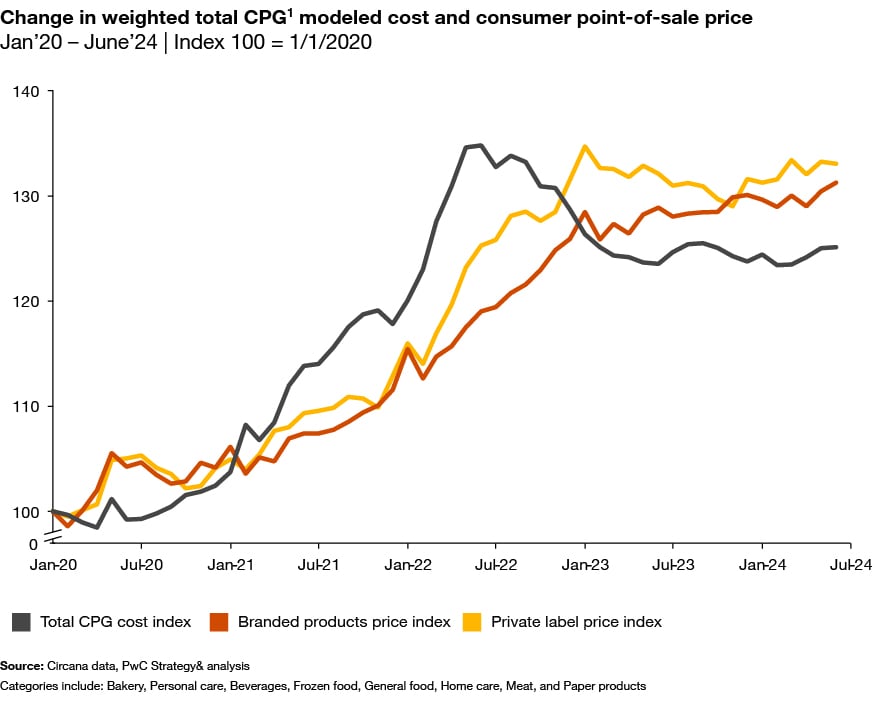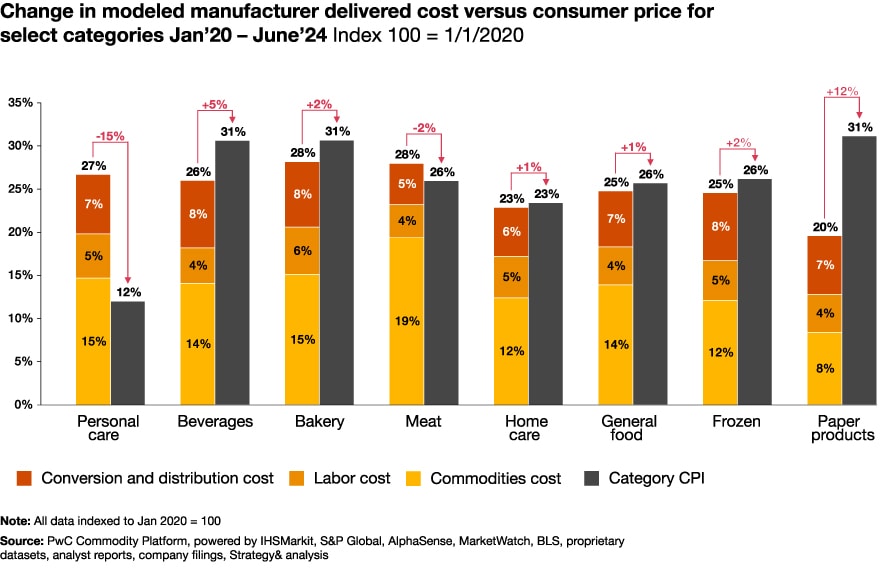Aiming digital investments at productivity
For many CPGs, achieving a strong ROI on digital investments has been difficult. Still, the maturation of AI and advanced robotics is transforming the ROI equation for digital investments that directly target labor and materials productivity — both in the office and in the factory.
Some companies are pushing the envelope on office productivity with an AI automation program that targets $100 million+ in benefits. Agile teams with technical skills and deep functional expertise deliver tailored solutions every two months, focusing on:
- Marketing: Campaign planning, content creation and distribution
- Operations: Demand and supply planning, order management, customer logistics and procurement
- HR: Labor planning and recruiting
- Finance: Forecasting and reporting
Approved solutions are expected to deliver at least 30% productivity gains (many exceed 50%), with payback in under two years.
In the supply chain, investments in advanced manufacturing controls, digital simulation models (i.e., digital twins) and robotics are helping to drive major improvements. For instance, digitizing a food plant increased throughput by 40%, while improving controls on a personal care line helped cut downtime by 90% and utility consumption by 30%. Robotic automation, including co-bots and automated guided vehicles, is reducing labor costs by 30%-50%, making these investments even more critical as labor availability tightens.
Adapting marketing strategies for agility
Marketing strategies should also evolve in this tough environment by becoming more attuned to shifting consumer expectations. Data-driven insights are central here, as they allow CPG companies to engage consumers with more personalized, relevant messaging. As inflation squeezes wallets, tailored promotions and loyalty programs become central for preserving brand loyalty.
As consumers become more price-conscious, they’re also demanding greater value and tailored experiences. Companies that go beyond surface-level personalization and leverage advanced data insights to anticipate needs and deliver targeted, meaningful interactions will be better positioned to build engagement and consumer trust.
Your next move
- Automate productivity. Aim digital and automation investments at step changes in labor and materials productivity, both within the office and in the supply chain.
- Utilize data. Use data-driven insights to sharpen marketing, deliver personalized messaging and preserve loyalty in a price-sensitive market.














